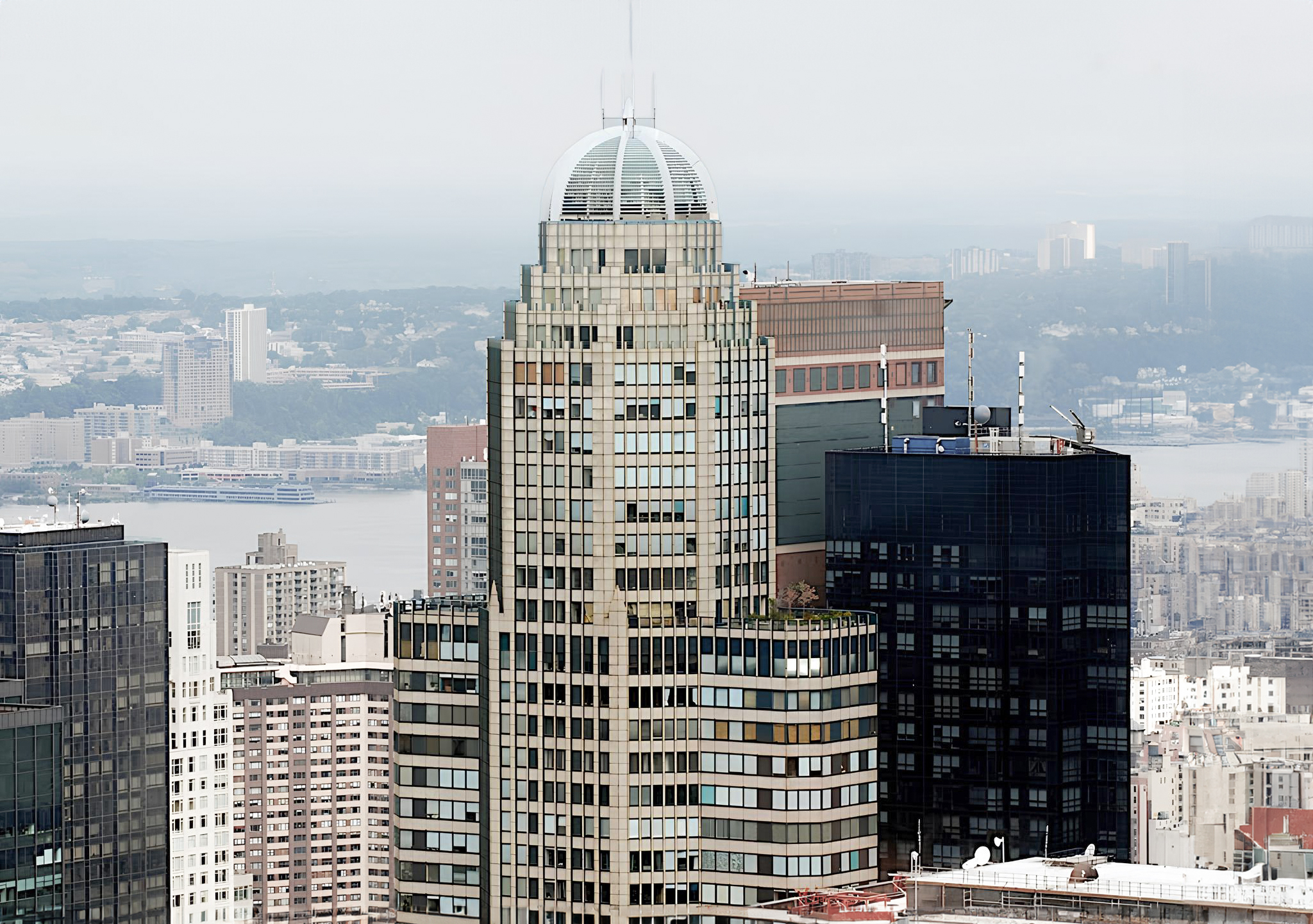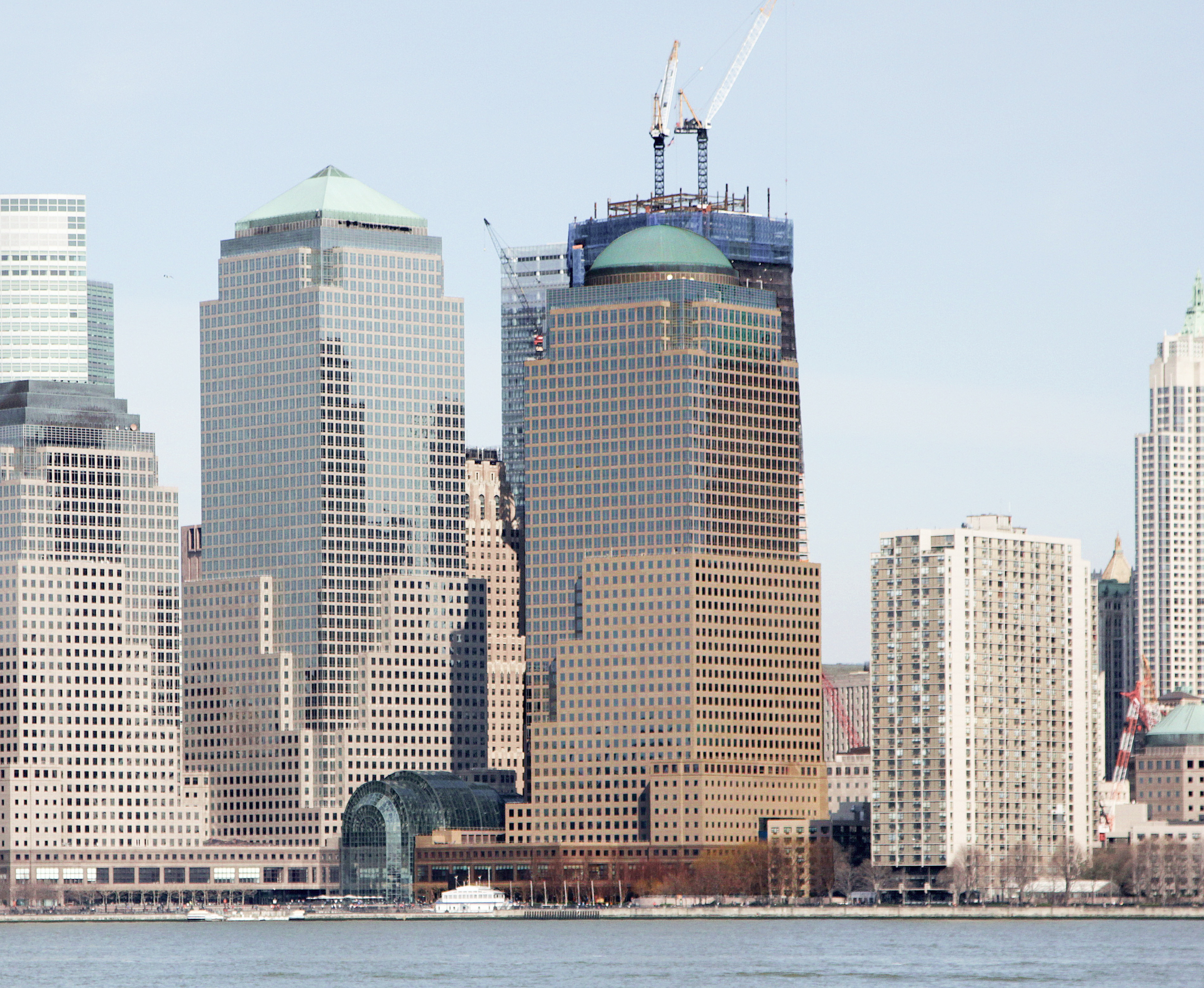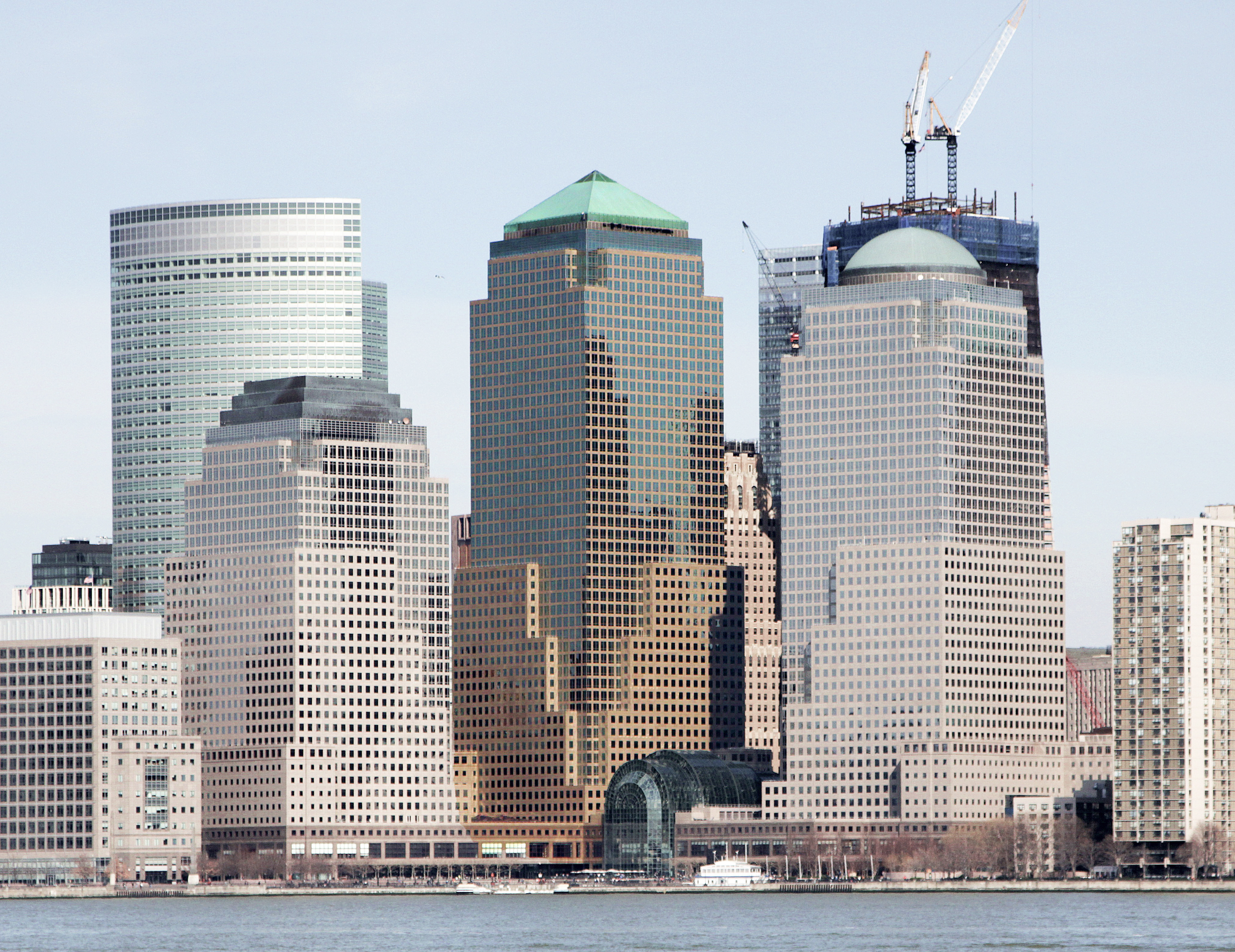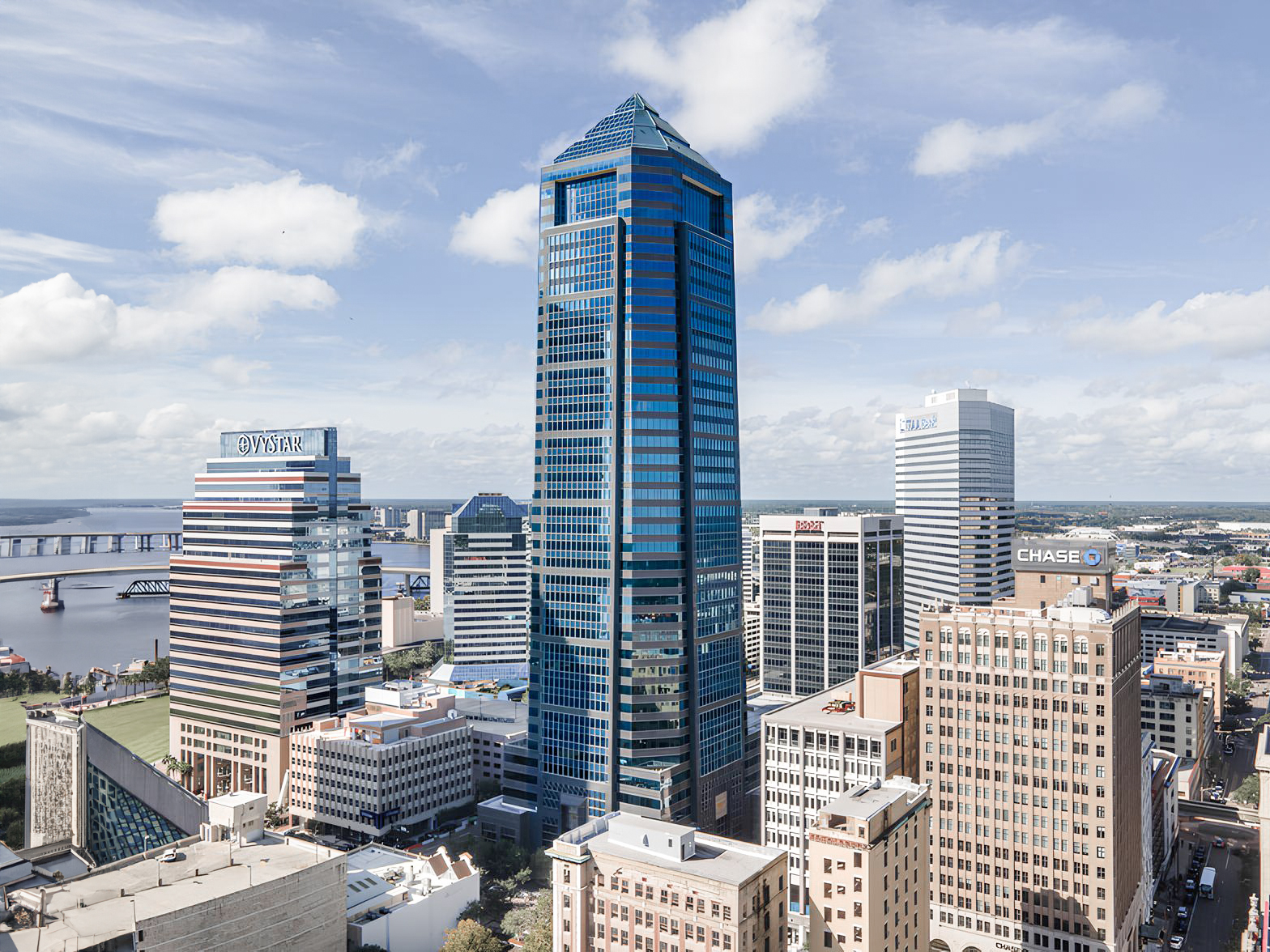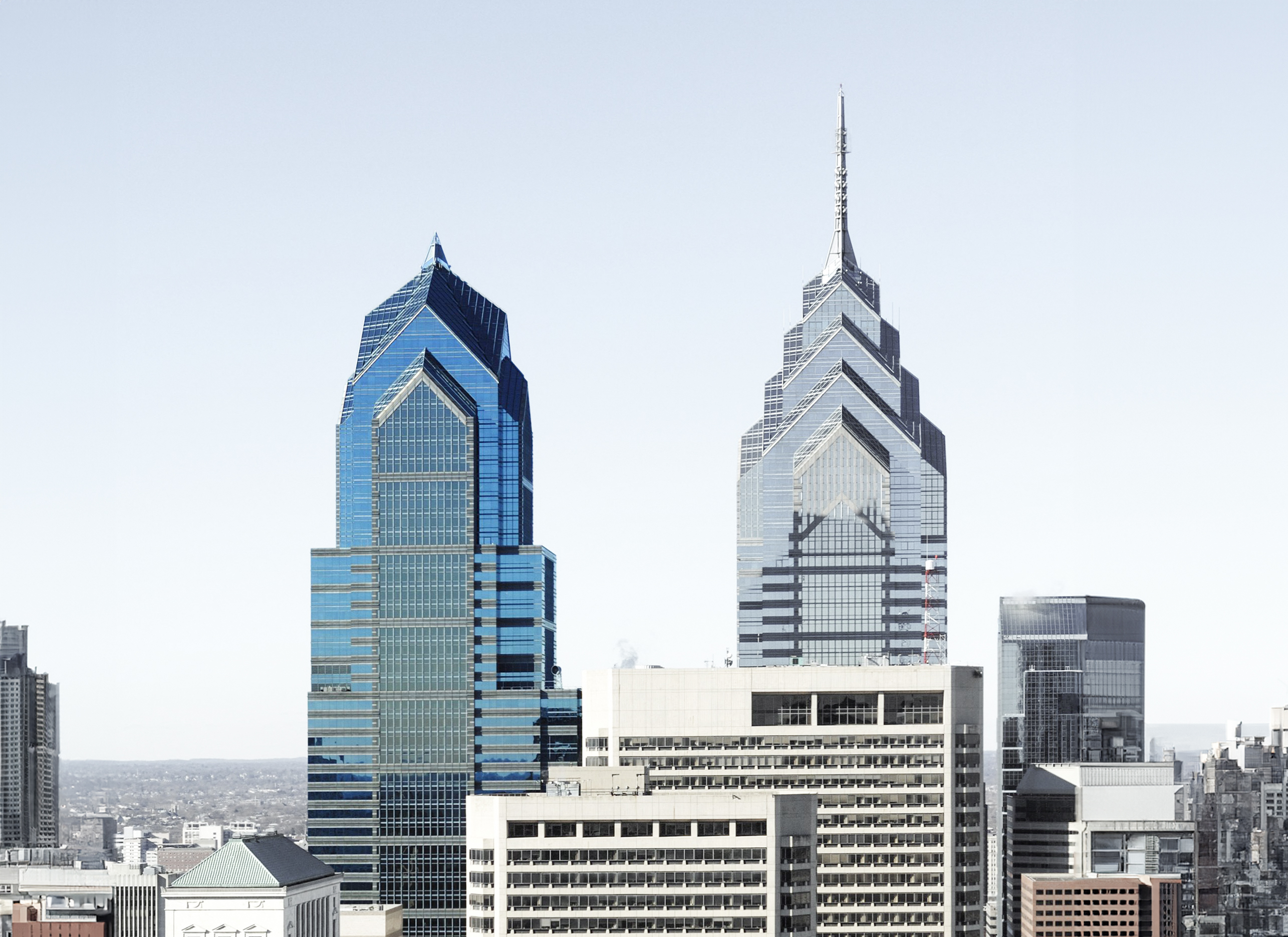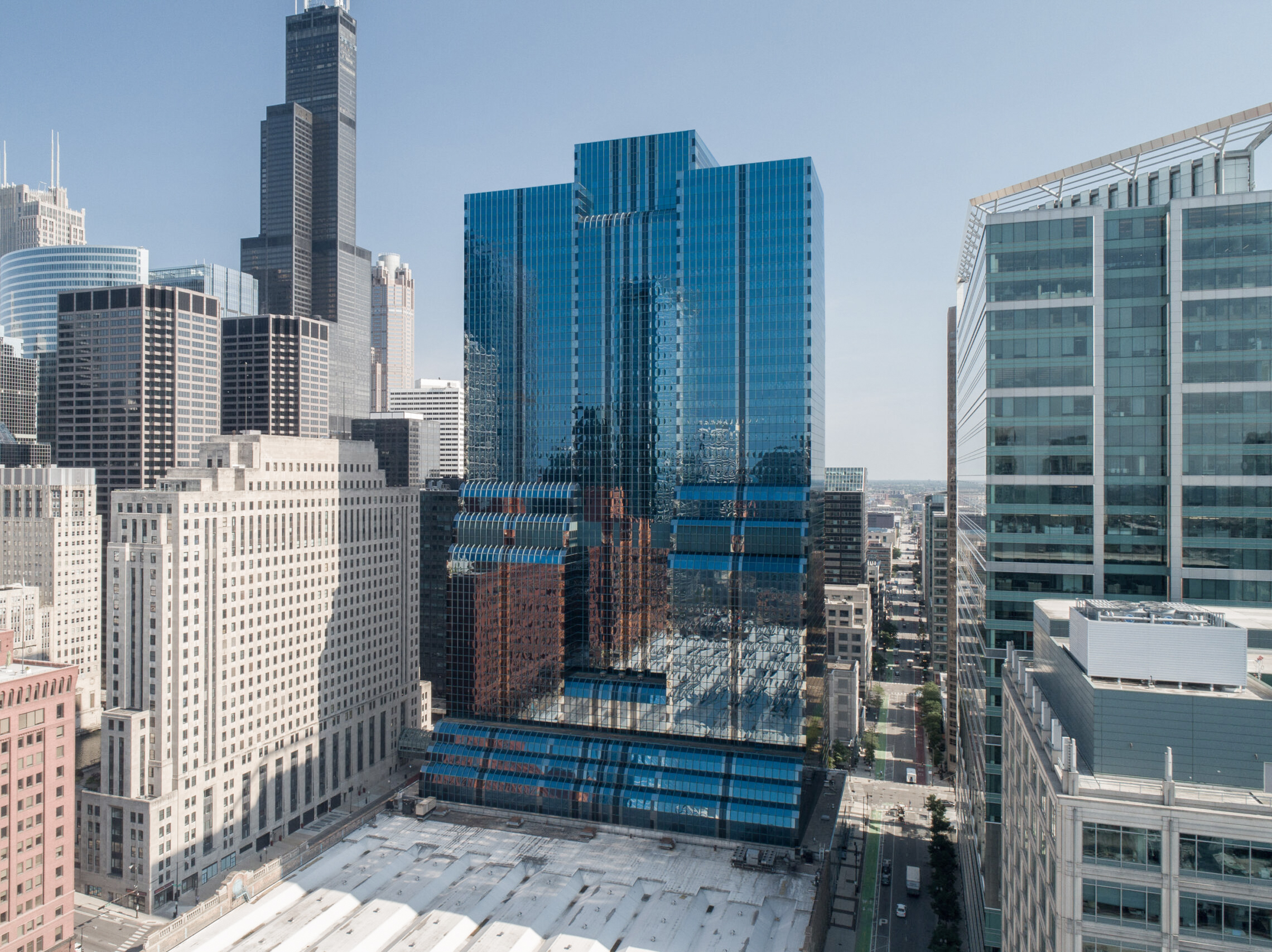The CitySpire Building is a Postmodernist skyscraper designed by Murphy/Jahn Architects, and built between 1985 and 1990 in New York, NY.
Its precise street address is 150 W 56th Street, New York, NY. You can also find it on the map here.
The mixed-use building places commercial spaces from floors 1 to 25 and the residential section from floors 26 to 72, offering the best views. The interior floor-numbering system skips floors 13 and 25, resulting in a total of 73 physical stories, but the top floor is labeled as 75.
A pedestrian gallery on the ground floor connects 51st Street to 57th Street through numerous passageways.
The building underwent a major restoration in 2011. The architect commissioned to undertake this restoration was Henson Architecture.
